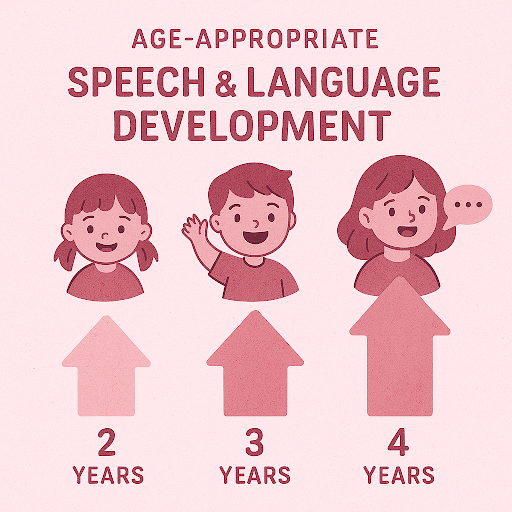How to Tell If a Child's Speech or Language Delay Is Still Age-Appropriate
Guidelines for determining when developmental delays warrant intervention versus monitoring

One of the most common questions SLPs get — from teachers, parents, even other therapists — is:
"Is this delay something we should worry about? Or is it still normal for their age?"
That question can be hard to answer, especially in borderline cases where development is uneven or the child seems to be "catching up."
So how do you know when a delay is still within the range of typical — and when it needs intervention?
Here's a framework for making that call with clarity and confidence.
Step 1: Know the Age Milestones (and the Flex)
Most SLPs know the big speech and language benchmarks — but here's a refresher of key ranges where confusion tends to arise:
Speech Sound Development (per norms):
- /p, b, m, n, h, w/ — mastered by ~3
- /k, g, t, d, ng/ — mastered by ~4
- /f, v, y/ — mastered by ~4–5
- /s, z, l, sh, ch, j/ — mastered by ~6–7
- /r, th/ — can develop as late as 7–8
Language Development:
- 2 years: 2-word combinations, ~50+ words
- 3 years: 3–4 word sentences, asks questions
- 4 years: tells stories, understands most of what's said to them
- 5+ years: uses complex sentences, maintains conversations, follows multi-step directions
✅ Developmental norms are averages — not deadlines. But persistent errors or gaps past the upper end of the range typically warrant action.
Step 2: Ask: Is It Functional?
A child might be "within norms" — but are their skills holding them back?
Examples:
- A 5-year-old who can't tell a simple story
- A 7-year-old with intelligibility issues that frustrate peers
- A 4-year-old who doesn't answer simple wh- questions
If the delay is interfering with:
- Academic access
- Social interaction
- Daily communication
- Emotional regulation
…it's likely worth intervening, even if technically "borderline."
Step 3: Look at Rate of Progress
Is the child making gains on their own?
- Some kids catch up without support — especially late talkers with strong receptive skills.
- Others stay stuck at the same level month after month.
- Slow or stagnant progress, even in a mild delay, is a red flag.
Ask:
- Has vocabulary grown?
- Are utterances getting longer?
- Are errors becoming less frequent?
If not, intervention may be the key to avoiding a wider gap later.
Step 4: Consider Risk Factors
Certain factors make it more likely a mild delay will persist or worsen:
- Family history of speech/language disorders
- Male gender
- History of ear infections
- Delayed pretend play or social skills
- Limited joint attention
- Low receptive language relative to expressive
When multiple risk factors are present, erring on the side of support is usually wise.
Step 5: Use a Short-Term Trial if You're Unsure
If the child is borderline:
- Start with 6–8 weeks of targeted support
- Monitor data weekly
- Track generalization outside of therapy
If they catch up quickly, great — you've done your job. If not, you've caught something early.
✅ You can also recommend classroom strategies or home language enrichment during this period if formal therapy isn't appropriate yet.
Step 6: Document It All Clearly
In your report, say:
"The student demonstrates mild expressive language delays that are within developmental expectations for age. However, current skills appear to impact classroom participation and peer communication. A short-term intervention trial is recommended to support further development and monitor progress."
Or:
"Speech sound production is within age-appropriate norms. While some errors persist, they are developmentally expected and do not currently interfere with intelligibility or academic access. No intervention recommended at this time."
How SLP Score Helps You Say It Clearly
SLP Score supports clinical decision-making with:
- Automated score interpretation aligned to developmental norms
- Narrative summaries that explain why a score may or may not indicate delay
- Editable language that helps you walk the line between watchful waiting and proactive support
- Quick export to Word or Google Docs
Because knowing the difference between "wait" and "act" is one thing — explaining it in writing is another.
Support When It's Needed. Reassurance When It's Not.
Let SLP Score help you do both with clear, professional documentation.
Start Here →